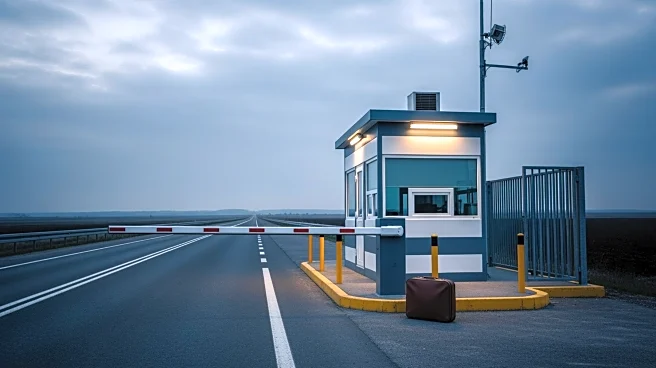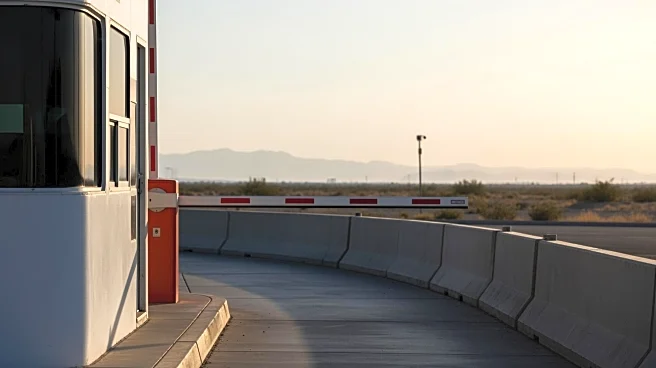What's Happening?
The Supreme Court has agreed to review a policy known as 'metering,' which was used during the Trump administration to limit the number of asylum seekers allowed to enter the U.S. from Mexico. This policy capped
the number of migrants who could apply for asylum at border crossings, effectively turning away those who could not physically set foot in the U.S. The practice was challenged in court, with lower courts ruling that it violated constitutional rights and federal law. Despite the Biden administration rescinding the policy, the Justice Department has pushed for the Supreme Court to hear the case, arguing that the tool is critical for managing border surges.
Why It's Important?
The Supreme Court's decision to review this policy could have significant implications for U.S. immigration policy and border management. If the court upholds the practice, it could provide future administrations with a mechanism to control the flow of asylum seekers during times of increased border activity. This decision could impact thousands of migrants seeking refuge in the U.S., potentially altering the legal landscape for asylum applications. The case also highlights ongoing debates about the balance between national security and humanitarian obligations.
What's Next?
The Supreme Court is expected to hear arguments in the case in the coming months, with a decision likely by mid-2026. The outcome could influence how future administrations handle border surges and asylum applications. Stakeholders, including immigrant rights groups and government agencies, will be closely monitoring the proceedings, as the ruling could set a precedent for how asylum seekers are processed at U.S. borders.












